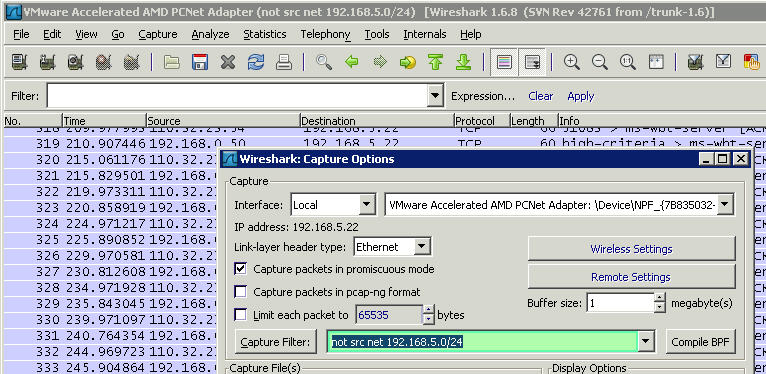
In the following example, we will match both HTTP and HTTPS ports or 80 and 443 ports. The || signs are used to add multiple filter port where packages will be listed where one of the port number match. Wireshark also supports multi-port filtering where multiple ports can be specified to math with an OR logic. Wireshark UDP Port Filter Filter Multiple Ports The provided filter can be applied to the package list with the array button on the left side of the filter bar like below. This filter bar provides help with IntelliSense by listing available filters. This bar is used to filter currently captures packets and network traffic according to the provided filters. Wireshark GUI provides the filter Bar in order to apply a display filter. Below we will list popular TCP and UDP protocols and their port numbers. TCP and UDP are the most popular protocols used for transmission and most network-related applications like websites, web applications, services, etc. Port numbers are used for TCP and UDP protocols. Popular TCP and UDP Port and Port Numbers As an advanced tool, it provides the ability to filter network traffic or packets according to the port or port number. It simply captures the network traffic for different protocols and provides it in a readable way to the user. So if we want to check any IP or website is reachable or not, we can use ping or traceroute which internally use ICMP protocol.Wireshark is a popular network sniffing and analysis tool.

That means we did not receive any ICMP reply for any ICMP request. Let’s ping some ip address which is not accessible.

What happens if IP address is not reqachable: Let’s look into the Identification field inside IPv4. Now let’s see ICMP request and ICMP reply side by side in a picture. Now for the same packet select ICMP part in Wireshark. Also IP layer mentioned the protocol as ICMP. Now select ICMP request packet in Wireshark and look into IPv4 layer.Īs this is ICMP request packet so we can see source IP as my system IP address and destination IP as Google’s one IP address. Number of ICMP reply: From capture we can see there are 4 ICMP reply packets. Number of ICMP request: From capture we can see there are 4 ICMP request packets. Note: We have to put filter ‘icmp’ as we are interested only in ICMP packets. Here is the ICMP request and reply packets for Google ping. Let’s check what happens in Wireshark when we ping to Google or 192.168.1.1. Step5: Stop Wireshark and put “ICMP” as filter in Wireshark. Instead we can do ping to ip address also.

That means ICMP request packets = ICMP reply packets. Here is the snapshot for successful ping to Google. Ping Make sure you have internet connection or ping will be failedJ.


 0 kommentar(er)
0 kommentar(er)
